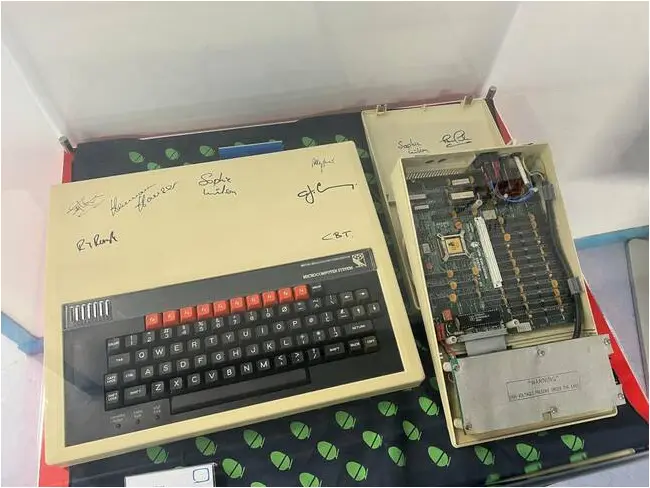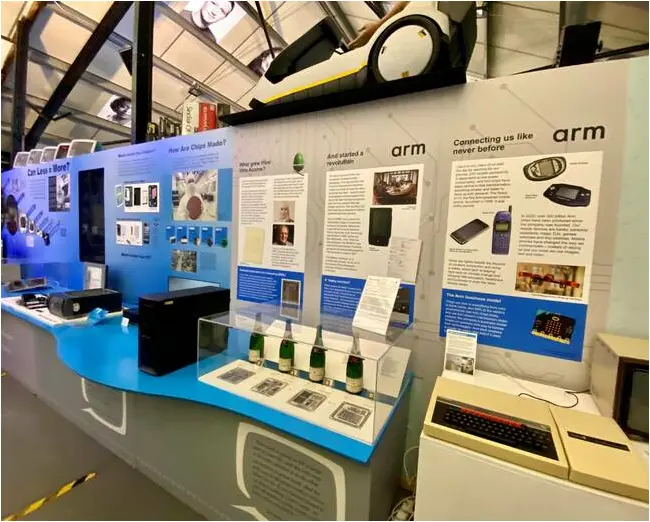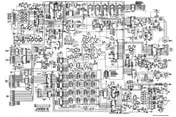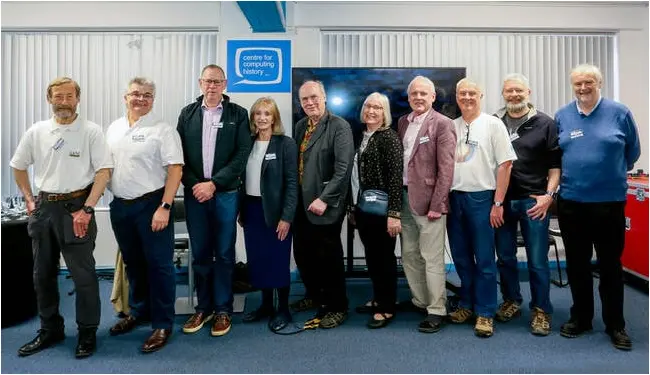808 Lines Of Bbc Basic And A Dream: Arm Architecture Turns 40
It is 40 years since the first Arm processor was powered up, and the UK’s Centre for Computing History (CCH) celebrated in style, with speakers to mark the event, hardware on show, and a countdown to the anniversary.

A BBC Micro signed by Arm co-designer Sophie Wilson and her co-boffins at the Centre For Computing History, Cambridge – click to enlarge (Pic: Richard Speed)
It is difficult to overstate the significance of the Arm architecture and its impact on the modern world. However, the prospect of powering billions of gizmos was not top of mind for Acorn staffers gathered around a BBC Micro.
The computer, a familiar sight in classrooms throughout the UK and plugged into the televisions of well-heeled parents, allowed the attachment of a second processor. There was a unit with an additional 6502 processor, another contained a Z80 processor. And this one could accept Acorn’s new RISC chip, freshly stamped out by VLSI.
At 3pm on April 26, 1985, having been plugged into the test board attached to the BBC Micro, power was introduced and the processor worked. Sophie Wilson, author of BBC BASIC and one of the brains behind the Arm chip, copied an Arm version of the BASIC interpreter and tried a command. Everything checked out.
“It did not say, ‘Hello world, I am Arm,'” laughed Wilson at the CCH event. “I think that’s one of Hermann’s [Hermann Hauser, who set up Acorn Computer with Chris Curry] apocryphal stories! But it did say Pi.”
By then, Wilson was already confident that the chip would work. Loading was complete, and the Tube, an expansion interface for the BBC Micro, was up and running. “Everything must be working,” she recalled. And it was. Almost.
One small bug slipped through the net, a classic combination of instructions that could result in some erroneous output. However, corks were popped long before it was uncovered.
A ten-person team had spent 18 months working on the low-power RISC chip, and it had pretty much worked the first time. Famously, a problem with the board meant that a connected ammeter registered zero power consumption – the design was supposed to sip power compared to other chips, but not to this extent. According to the CCH, the actual figure was around 120 mW, considerably below the 2,000 mW demanded by some contemporary CISC processors.
Also speaking at the CCH event was Steve Furber, famous for his work at Acorn and more recently the SpiNNaker architecture. “I was responsible for the micro-architecture [of the first Arm processor],” he said, “which was captured in a reference model written in BBC BASIC.
“The fact that you can write the whole Arm description in 808 lines tells you how simple it was.”
And today’s Arm CPUs? Some good-natured heckling from the audience put the figure as the output of 200 engineers over two years. Quite a bit more than the 808 lines Furber recalled for the effort more than 40 years ago. Another wag in the audience suggested that without comments, the line count might be even less, to which Furber laughed and said: “Well, it was written in BBC BASIC, which is a self-commenting language.”

Arm exhibit at the Centre for Computing History (pic: Centre for Computing History) – click to enlarge
Furber and Wilson were joined by other luminaries from the early days of the processor, including Hugo Tyson, Lee Smith, Arthur Norman, and Jamie Urquhart, in a refreshingly modest retelling of the Acorn and Arm story.
“We thought it was a really obvious way to build a processor and everybody would be doing it,” said Wilson. “That turned out not to be the case.”
That processor, which was first fired up 40 years ago, was a glimpse into the future. It would take bigger companies many years to start seeing things the same way as that early team.
The Arm exhibit is now a permanent fixture at Cambridge’s Centre for Computing History, and is well worth a visit. The museum also has a range of computers, along with a smattering of vintage gaming consoles, with which visitors can play or, in the case of this writer, be bad at. ®
A considerable amount of time and effort goes into maintaining this website, creating backend automation and creating new features and content for you to make actionable intelligence decisions. Everyone that supports the site helps enable new functionality.
If you like the site, please support us on “Patreon” or “Buy Me A Coffee” using the buttons below
To keep up to date follow us on the below channels.



![[Palo Alto Networks Security Advisories] CVE-2025-4614 PAN-OS: Session Token Disclosure Vulnerability 2 Palo_Alto_Networks_Logo](https://www.redpacketsecurity.com/wp-content/uploads/2025/02/Palo_Alto_Networks_Logo-300x55.png)

